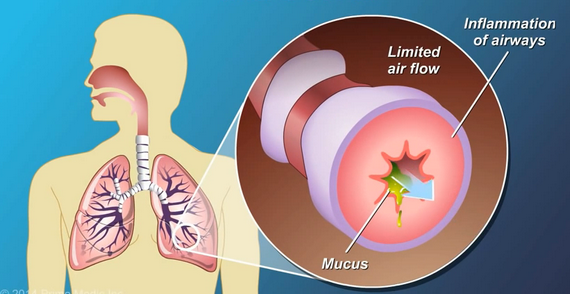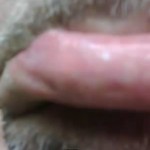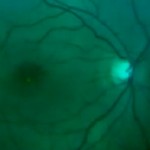COPD or Chronic obstructive pulmonary disease refers to a kind of lung disease that consists of emphysema, chronic bronchitis and a chronic obstruction of the airways. Patients with this disease face problems while breathing as the airways get narrowed down or also known as airflow obstruction.
In the UK, COPD is one of the most commonly found respiratory diseases and affects people between the ages of 35 to 45; however it can remain undiagnosed till their fifties. Almost 3 million in the UK are reported to be living with this disease in the UK, and 900,000 out of them have been diagnosed. The main reason of why it goes unchecked is because of the ‘cough’ that people often dismiss as a symptom as it might appear to them nothing but a ‘smoker’s cough’. Although more men than woman are affected, but the rates among women have been increasing in the past few years. .
Symptoms
The symptoms generally take few years to develop so one might not actually be aware of the disease. It is not really noticeable till the late 30s and most of the patients have been diagnosed in the 50s. Some of the prominent symptoms are as follows:
Difficulty in breathing and chronic breathlessness during physical activities.
Chronic cough and phlegm.
Frequent infections in the chest and lungs, especially during winters
Wheezing and Flare-ups or exacerbation that is experienced more in winters. This is one of the most alarming signs.
Weight loss, fatigues and feeling exhausted even when one is not working
Swelling in the ankles
Pain in the chest and blood in the cough are rare signs and might also be a sign of lung cancer.
Causes
1. Smoking is the most common cause and the more one smokes the more are the chances of developing this disease as it causes inflammation and irritation of the lungs and can also lead to scarring. The changes that the body goes through are more or less permanent, especially in the lungs. It causes the thickening of the airways wall producing more mucus. The delicate walls of the air sacs in the lungs get damaged giving birth to emphysema. The lungs lose their elasticity as well. Smaller, scarred and narrowed airways increase the production of cough, phlegm and breathlessness.
2. Even passive smoking creates equal chances of having COPD.
3. Apart from Smoking it is also caused by inhalation of dust, fumes and other air pollutants as well as genetic disorders. The rare genetic tendency to develop COPD is due to alpha-1-antitrypsin deficiency that is a protein. People with this deficiency can be diagnosed with COPD at a younger age.

COPD life expectancy
COPD is a chronic and serious condition causing deaths of more than 25,000 people every. In America alone there are at present 20 million people living with this fatal condition. As the time passes the condition worsens. However there is no fixed answer to how long one may live as it is a progressive disease and depends on other variables such as the lifestyle, care and the overall health of the sufferer. The GOLD System or The Global Initiative for Chronic Obstructive Lung Disease has made system that kind of measures the seriousness of COPD by 4 stages that are:
Stage 1 – very mild
Stage 2 – mild
Stage 3 – severe
Stage 4 – very severe
The higher the stage, the shorter is the life expectancy.
The BODE Index s another system to measure life expectancy in COPD through body mass index, airflow and a person’s capability to exercise capacity.
Treatment
There is no permanent cure for COPD but certain steps can be taken to reduce the symptoms.
Quitting smoking: This is undoubtedly the most important step to prevent COPD from turning fatal. In fact quitting smoking at the initial stage alone makes a lot of difference. The damage that has already been done cannot be undone but by giving up smoking one can prevent it from turning fatal.
A lot of people take support of inhalers such as Short-acting bronchodilator inhalers that helps doses of medicine reach directly to the lungs for the muscles to relax. Other types of inhalers include Long-acting bronchodilator inhalers, beta-2 agonist inhalers antimuscarinic inhalers and Steroid inhalers.
Medication is the most common treatment in this disease. Theophylline tablets are generally prescribed to reduce the side effects and relax the muscles and make more space in the airways that gets obstructed.
When the chest is severely infected then the GP might also prescribe Antibiotics and steroid tablets for a short course.
Other types of treatments include Nebulised medication that uses a compressor to administer nebulised medicine with the help of a mouthpiece in the form of a liquid that gets converted into a fine mist so that a larger dose of medicine can be taken in one go.


I had Chronic Obstructive Pulmonary Disease (COPD) for 7 years, My first symptoms were dry cough, chest tightness and shortness of breath. This was ongoing for 3 years, my first chest x-ray only showed bronchitis. Finally I went to a pulmonologist and was diagnosed with COPD, I was immediately placed on Seebri Breezhaler, it’s an inhalation powder, I take it once a day in the morning. Finally, i started on COPD Herbal Formula i ordered from NewLife Herbal Clinic, the herbal formula worked 10x better than all the medications my pulmonologist had prescribed. I have had a total decline of symptoms since i started on this herbal formula, visit ww w. newlifeherbalclinic. com or email info @ newlifeherbalclinic. com
Larry Hemm